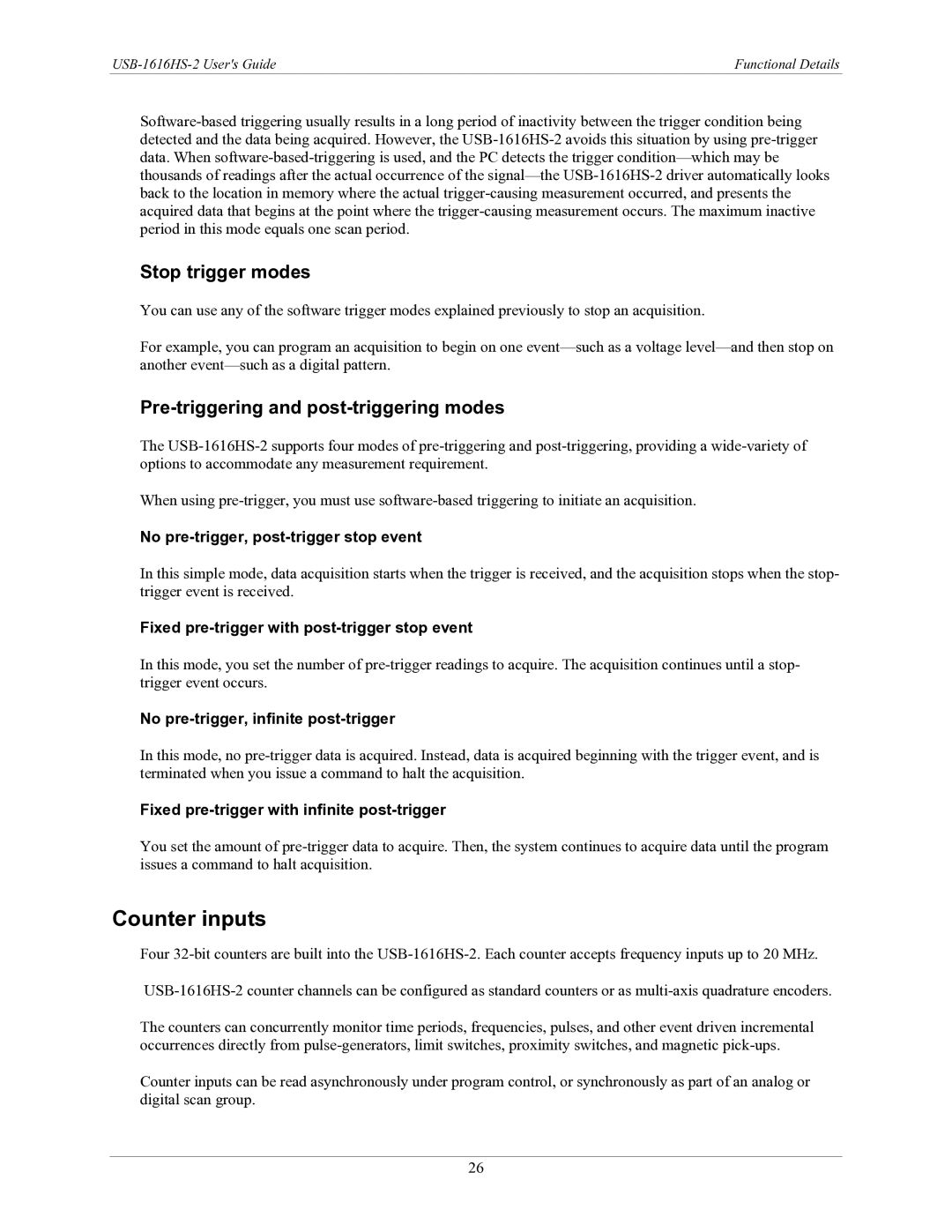USB-1616HS-2 User's Guide | Functional Details |
Software-based triggering usually results in a long period of inactivity between the trigger condition being detected and the data being acquired. However, the USB-1616HS-2 avoids this situation by using pre-trigger data. When software-based-triggering is used, and the PC detects the trigger condition—which may be thousands of readings after the actual occurrence of the signal—the USB-1616HS-2 driver automatically looks back to the location in memory where the actual trigger-causing measurement occurred, and presents the acquired data that begins at the point where the trigger-causing measurement occurs. The maximum inactive period in this mode equals one scan period.
Stop trigger modes
You can use any of the software trigger modes explained previously to stop an acquisition.
For example, you can program an acquisition to begin on one event—such as a voltage level—and then stop on another event—such as a digital pattern.
Pre-triggering and post-triggering modes
The USB-1616HS-2 supports four modes of pre-triggering and post-triggering, providing a wide-variety of options to accommodate any measurement requirement.
When using pre-trigger, you must use software-based triggering to initiate an acquisition.
No pre-trigger, post-trigger stop event
In this simple mode, data acquisition starts when the trigger is received, and the acquisition stops when the stop- trigger event is received.
Fixed pre-trigger with post-trigger stop event
In this mode, you set the number of pre-trigger readings to acquire. The acquisition continues until a stop- trigger event occurs.
No pre-trigger, infinite post-trigger
In this mode, no pre-trigger data is acquired. Instead, data is acquired beginning with the trigger event, and is terminated when you issue a command to halt the acquisition.
Fixed pre-trigger with infinite post-trigger
You set the amount of pre-trigger data to acquire. Then, the system continues to acquire data until the program issues a command to halt acquisition.
Counter inputs
Four 32-bit counters are built into the USB-1616HS-2. Each counter accepts frequency inputs up to 20 MHz.
USB-1616HS-2 counter channels can be configured as standard counters or as multi-axis quadrature encoders.
The counters can concurrently monitor time periods, frequencies, pulses, and other event driven incremental occurrences directly from pulse-generators, limit switches, proximity switches, and magnetic pick-ups.
Counter inputs can be read asynchronously under program control, or synchronously as part of an analog or digital scan group.
